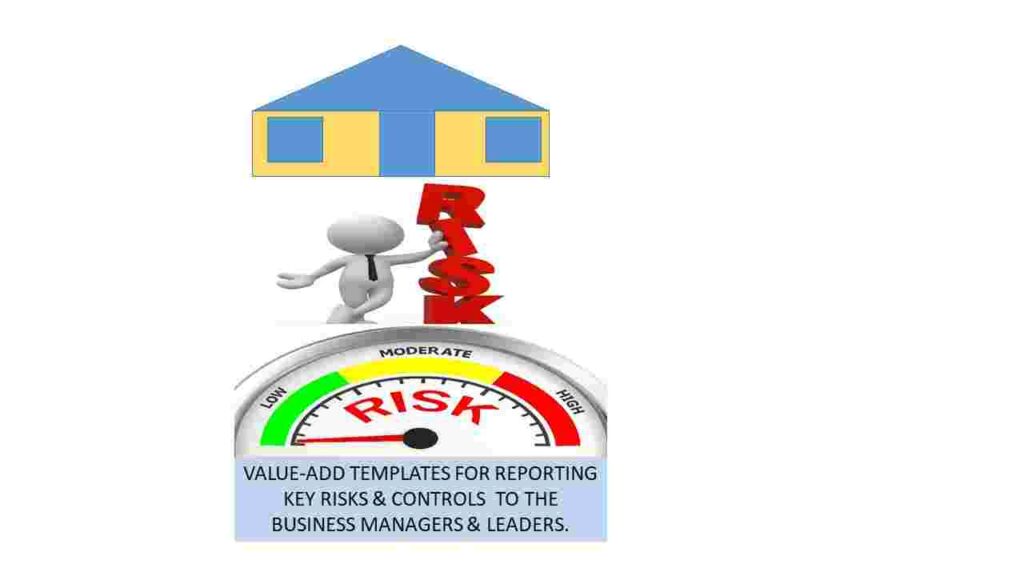Introduction
Every endeavor life has elements of threats and opportunities called risks that may mar or enhance the opportunity of achieving the target goals and objectives. To prevent the threats and optimize the opportunities, proactive, detective and corrective decisions and actions need to be taken timely and the results of the decisions and actions need to be evaluated or benchmarked against the planned targets to ensure proper alignment in terms of time, cost and value.
The risk profile which includes the threats and the embedded opportunities, sources, sizes or potential impacts and actions taken to managing them need to be reported to the relevant stakeholders based on the agreed frequency and format to help provide better insight, understanding, planning and execution.
Managing risk profiles requires establishing frameworks of guidelines to support timely risk understanding, identification, measurement, reporting, decision taking, action planning and execution as well as performance evaluation of the results achieved against targets and remediation of the areas fallen short.
In corporate entities, the same principles that govern the design and operation of an effective organization applies to the design and operation of effective risk management framework, Based on the McKinsey 7S Framework, these principles are described as
(1) Strategy – strategic direction of the company which comprises the corporate mission vision, goals and objections and strategic intents and actions and value propositions for meeting the corporate goals and objectives.
(2) Structure – authority levels depicting hierarchical reporting lines, job positions and descriptions
(3) Systems – business policies, processes, procedures and tools including the adopted methodologies and technologies.
(4 & 5) Skills and Skills – talents in the company and the way they are recruited and retained.
(6) Style –different ways and medium for engaging and communicating information across all stakeholder levels.
(7) Shared Value – core values driven by the general beliefs that guide every thoughts, words and actions in the company depicting how the company wants to be perceived by the global community.
The above 7S Framework must be considered first at the corporate level and then cascaded to the various departments and business units through the departmental charters and practiced at every level to demonstrate good understanding, commitment and willingness to live by them in ever business operation alignment with the company’s overall vision, mission, goals and objectives.
The combination of the various activities within the 7S Framework collectively contribute to the effective engagement and reporting of the company’s risk profile and the management activities to different stakeholders in order to drive risk knowledge awareness, understanding, informed decisions and actions. The common stakeholders found in every organization are equity investors, company employees (board, executive management, middle and operational level staff) and external business partners. Each of the stakeholder levels needs different levels of information relating to the company’s risk profile and management actions. At the Equity investors and board levels, higher summary of the risk profile and the management actions are reported while at lower levels more detailed information are provided. However, whatever level of information being provided must be credible and trusted by the users. This means that the users of the information must exercise extreme diligence and ensure that all the qualities of integrity are embedded in the base transactions and data capturing, processing and reporting.



Thanks for adding value to me and others!
The templates are worth considering. Please share the link for download or a trial!
Thank you for sharing your wealth of knowledge.
How does one download the template?
Thank you so much sally for the post. So insightful. How can I access the templates?
Sally very insightful overview and your templates simplifies the thought process of building one.May I obtain the template please Sally.
Dear Nur
Thanks for your appreciation of my writing. Please, drop yoyr email and I will send it to you.
Thank you for the insightful information on reporting key risks and controls to business leaders and managers. This valuable input will guide my reporting format moving forward. However, I would appreciate it if you could grant me access to download the template for immediate use.
Dear Sally,
First of all, i wish you a wonderful year 2025 with joy, happiness and sucess for you and your relatives. t I’d like to congratulate you for sharing all your experience and thoughts on IT Risk Dashboards. A clear and efficient commmunication to the Board of Directors is the foundation for all organisations . The Board hands the money and they need to know an updated security posture of the company. I’ll forward to reading your next posts. I’ll be grateful to you if you could grant me access to download your templates for my use in my current missio? Regards. Faha-Andriam
Dear Adtiam
Thanks for your appreciation of my writing. Please, drop yoyr email and I will send it to you.